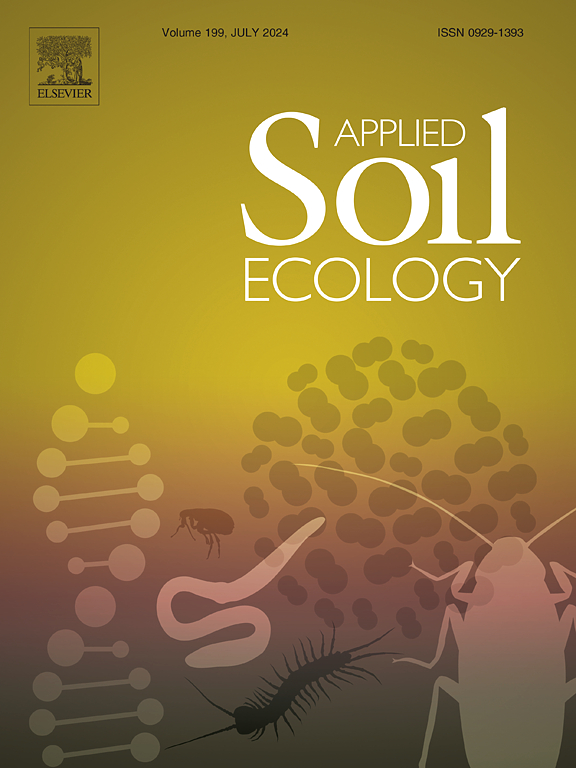Short term effects of fire on assembly rules and β-diversity of soil bacteria in Mediterranean soils
IF 4.8
2区 农林科学
Q1 SOIL SCIENCE
引用次数: 0
Abstract
Fires are common in Mediterranean soils and constitute an important driver of their evolution; however, their effects on the assembly rules of soil bacteria received limited attention. We reanalyzed the data from Aponte et al. (2022), retrieved from the NCBI database, to investigate fire-induced short term effects on β-diversity, abundance ranking, and the co-occurrence patterns among bacterial OTUs under the pyrodiversity-biodiversity hypothesis. Higher richness and abundance of bacterial OTUs were recorded in the burnt compared to the unburnt areas. Although a-diversity was unaffected, β-diversity based on Bray Curtis similarity index decreased by fire. The β-ratio analyzing the two components of β-diversity (nestedness and turnover) was >0.5 in unburnt and <0.5 in burnt area, denoting the predominance of stochastic and deterministic regulation, respectively. The Zero-Sum Model showed the best fit to the abundance data of the local communities followed by the deterministic Zipf-Mandelbrot model. Fire increased the dispersion between the local communities, while taxa niche diversification was less strict compared to the unburnt soils. Fire disconnected the co-occurrence bacterial network, but networks in both burnt and unburnt areas exhibited modular architecture with Small-World properties and increased robustness to broadly distributed disturbances. However, fire increased the vulnerability of bacterial network to targeted disturbances. The robustness to widespread disturbances such as fire was likely related to the long evolutionary history of organisms inhabiting the Mediterranean soils.

求助全文
约1分钟内获得全文
求助全文
来源期刊

Applied Soil Ecology
农林科学-土壤科学
CiteScore
9.70
自引率
4.20%
发文量
363
审稿时长
5.3 months
期刊介绍:
Applied Soil Ecology addresses the role of soil organisms and their interactions in relation to: sustainability and productivity, nutrient cycling and other soil processes, the maintenance of soil functions, the impact of human activities on soil ecosystems and bio(techno)logical control of soil-inhabiting pests, diseases and weeds.
 求助内容:
求助内容: 应助结果提醒方式:
应助结果提醒方式:


